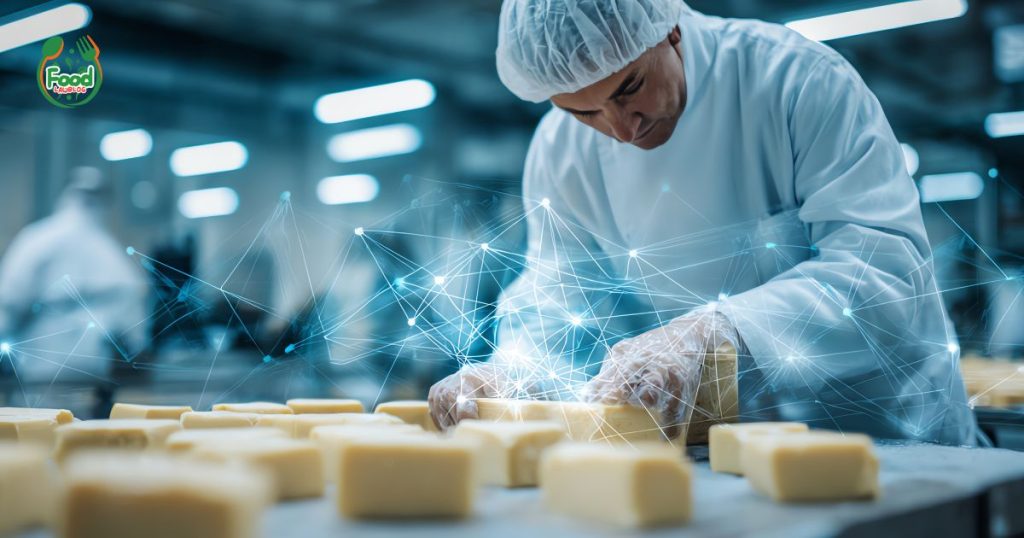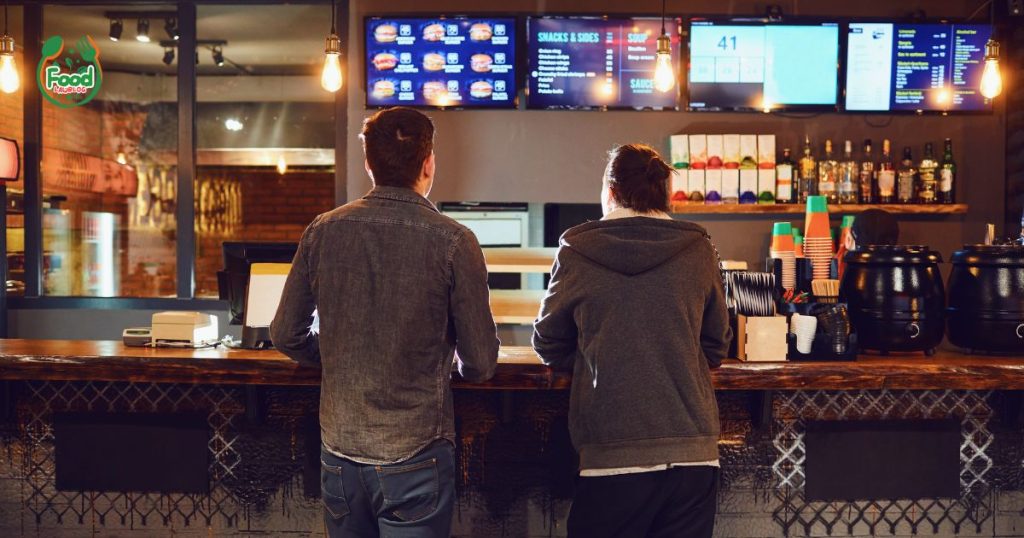Introduction
Fast Food Industry Trends: Discover the transformative fast food industry trends shaping 2026. Explore AI, robotics, sustainability, and omnichannel strategies to future-proof your QSR business. The quick-service restaurant (QSR) landscape is poised for its most significant evolution yet. As we look toward 2026, the forces of digital acceleration, consumer consciousness, and operational necessity are converging to redefine the very essence of fast food.

For operators, marketers, and industry analysts, understanding these shifts is not just an academic exercise—it is a critical prerequisite for survival and growth. This article unpacks the transformative fast food industry trends 2026 will bring to the forefront, offering a comprehensive roadmap for navigating the challenges and capitalizing on the opportunities that lie ahead. From hyper-personalization driven by artificial intelligence to the rise of regenerative sourcing, the future of fast food is being built today.
The Digital Transformation: Omnichannel Experiences and Data-Driven Operations
The digital storefront is no longer an alternative; it is the primary battleground for customer acquisition and retention. By 2026, the line between physical and digital will be almost entirely blurred, creating a truly omnichannel ecosystem. Success will depend on a brand’s ability to offer a seamless, consistent, and convenient experience across every touchpoint.
AI in Menu Engineering and Personalization
Artificial intelligence (AI) is graduating from a back-office tool to a front-line strategist. Predictive analytics will power dynamic menu engineering, suggesting what items to promote, at what price, and at what time of day to maximize profitability.
- Predictive Upselling: AI algorithms will analyze a customer’s order history, location, time of day, and even local weather to offer highly relevant upsells and cross-sells. A system might suggest a cold brew on a hot afternoon or a comfort food combo on a rainy evening, increasing average transaction value.
- Dynamic Pricing: Although controversial, price elasticity models fueled by AI are expected to become more common. This isn’t about surge pricing during the lunch rush, but rather subtle, data-informed adjustments. A restaurant might offer a slight discount on a new item during off-peak hours to encourage trial, with the price automatically adjusting as demand builds. Gaining customer trust here is paramount.
- Hyper-Personalization at Scale: Loyalty Programs Will Move Beyond Simple Point Systems. By leveraging first-party data, QSRs can create individualized offers and content. Imagine a customer receiving a notification for a new plant-based burger just days after they ordered a similar item. This level of personalization strengthens brand affinity and drives repeat business. [Learn more with our first-party data strategy guide].
The Evolution of Digital Ordering and Delivery Logistics
The convenience of digital ordering is now a baseline expectation. In 2026, the focus will shift from simply having an app to optimizing the entire fulfillment process for speed, accuracy, and cost-efficiency.
- Self-Service Kiosks and Mobile Wallets: In-store self-service kiosks will become standard, reducing queues and freeing up staff for more complex, customer-facing roles. Integration with mobile wallets and even “Buy Now, Pay Later” (BNPL) services will streamline the payment process, reducing friction at the final step of the transaction.
- Last-Mile Mastery: The “last mile” of delivery remains the most expensive and complex part of the chain. By 2026, we will see a blended approach to healthcare. While partnerships with third-party aggregators will continue, many larger brands will invest in their own or hybrid delivery fleets to control the customer experience and own the data.
- Micro-Fulfillment and Drone Delivery: Expect to see more experimentation with micro-fulfillment centers—small, highly automated hubs located in dense urban areas—to reduce delivery times. While still niche, drone and autonomous vehicle delivery will transition from pilot programs to limited commercial rollouts in specific, regulation-friendly markets, particularly for suburban “dark store” locations that serve only delivery and pickup purposes.
The Rise of Ghost Kitchens and Virtual Brands
Ghost kitchens, also known as dark kitchens, are professional cooking facilities designed exclusively for delivery and takeout orders. They represent a fundamental shift in restaurant real estate and operational strategy.
Optimizing Unit Economics
Without the need for a dining room, prime real estate, or extensive front-of-house staff, ghost kitchens offer significantly lower overhead. This allows brands to enter new markets with reduced capital expenditure and test new concepts with minimal risk. Franchisees can leverage ghost kitchens to expand their delivery radius without building a full-scale new store, improving their unit economics and market penetration. [Explore our guide on QSR franchise financing].
The Virtual Brand Explosion
Ghost kitchens are the perfect incubator for virtual brands—digital-only restaurant concepts that exist solely on delivery apps. A single ghost kitchen can house multiple virtual brands, all running from the same cookline and using the same raw ingredients. This enables operators to target diverse consumer behavior segments from a single location. A single kitchen could be producing wings for one brand, salads for another, and burgers for a third, maximizing ingredient utilization and capturing a wider share of the market. Success here requires sharp digital marketing and a deep understanding of [cohort analysis for customer lifetime value (LTV)].
The Sustainability Mandate: From Packaging to Sourcing
Consumer and investor pressure is forcing the QSR industry to take environmental, social, and governance (ESG) issues seriously. By 2026, sustainability will be a core pillar of brand identity and a key differentiator in a crowded market.
Sustainable Packaging and Waste Reduction
The mountain of single-use packaging generated by the fast food industry is no longer tenable. The push for circularity will intensify.
- Compostable and Recyclable Materials: Brands will accelerate the transition away from petroleum-based plastics toward materials that are genuinely compostable or easily recyclable. This involves not just changing materials but also educating consumers on proper disposal.
- Reducing the Carbon Footprint: The focus will extend beyond packaging to the entire supply chain’s carbon footprint. This includes optimizing delivery routes, investing in energy-efficient kitchen equipment, and transparently reporting progress through ESG reporting. Forward-thinking brands will view these initiatives not as costs but as investments in brand reputation and long-term resilience. [Download our restaurant sustainability checklist].

Regenerative Sourcing and Supply Chain Resilience
The concept of sustainability is moving beyond “do no harm” to actively doing good. Regenerative agriculture—a set of farming practices that aim to restore soil health and biodiversity—will enter the mainstream QSR lexicon.
- Building Resilient Supply Chains: Brands that invest in partnerships with farms practicing regenerative agriculture will not only burnish their green credentials but also create more resilient supply chains. Healthy soil is more resilient to drought and disease, thereby mitigating risks associated with climate change and ensuring a more stable supply of key ingredients.
- The Rise of Alternative Proteins: Plant-based options are now table stakes. The next frontier is the refinement and diversification of alternative proteins. This includes improvements in plant-based formulations to mimic better the taste and texture of meat, as well as the cautious introduction of cultivated (lab-grown) meat in markets where regulations permit. Menu optimization will be key to integrating these items profitably.
Health, Wellness, and Radical Transparency
The modern consumer demands to know what is in their food. This trend toward nutritional transparency is reshaping menus and marketing messages across the industry.
Nutritional Transparency and Allergen Labeling
Vague health claims are being replaced by clear, accessible information. By 2026, enhanced nutritional labeling will be standard, often delivered dynamically through apps and digital menu boards.
- Clear and Accessible Information: Smart QR codes on packaging will link customers to detailed information about ingredients, sourcing, and full allergen profiles. This goes beyond legal compliance; it is about building trust. Brands that embrace this “radical transparency” will win the confidence of health-conscious consumers.
- Catering to Dietary Needs: Menus will become more inclusive, with dedicated offerings for various dietary preferences, including halal and kosher certifications, as well as gluten-free and keto-friendly options. This isn’t just about niche markets; it’s about making the brand accessible to a wider audience and accommodating group dining decisions.
Functional Foods and Clean Labels
Consumers are increasingly seeking foods that do more than satisfy hunger. The interest in “functional foods”—ingredients that offer specific health benefits, like probiotics for gut health or antioxidants—will influence new product development. Alongside this is the demand for “clean labels,” meaning shorter ingredient lists with recognizable, pronounceable items. Artificial preservatives, colors, and flavors will continue to be a liability.
Reinventing the Restaurant: Automation, Labor, and Design
The physical restaurant space is being reimagined to align with a digitally-driven, efficiency-focused operational model. This involves rethinking everything from the kitchen workflow to the drive-thru lane.
Robotics, Automation, and the Future of Labor
Automation is the industry’s answer to persistent labor shortages and rising wage pressures. Its implementation will be targeted and strategic, aiming to augment human workers rather than replace them entirely.
- Cookline Automation: Robots capable of tasks such as deep-frying, grilling burgers, and assembling simple menu items will become increasingly prevalent. This frees up human staff to focus on quality control, expediting orders, and customer service.
- Automated Kitchen Display Systems (KDS): Advanced KDS will orchestrate the entire kitchen. These systems will route orders intelligently based on cook times, station capacity, and delivery deadlines, ensuring every part of a complex order is ready simultaneously. This reduces wait times and improves order accuracy, directly impacting customer satisfaction and Net Promoter Score (NPS).
- Labor Upskilling: As repetitive tasks are automated, the role of the QSR employee will be elevated. Training will focus on technical skills (managing the new equipment), problem-solving, and enhanced customer interaction. The future QSR worker will be more of a technician and brand ambassador than a line cook, leading to new career paths within the industry.

The Redesigned Drive-Thru Experience
The drive-thru, a lifeline during the pandemic, is undergoing a high-tech makeover. The goal is to increase throughput, improve accuracy, and enhance the customer experience.
- Multi-Lane and Smart Lane Ordering: Expect to see more dual-lane drive-thrus. One lane may be dedicated to customers who have pre-ordered on a mobile app, allowing them to bypass the main ordering queue. AI-powered voice bots will handle initial order-taking with increasing accuracy, speeding up the process and enabling human staff to focus on payment and fulfillment.
- Data-Driven Throughput: License plate recognition technology, integrated with loyalty accounts, enables instant personalization. The menu board could greet a returning customer by name and suggest their usual order. This level of service, once reserved for fine dining, is now available at the drive-thru. [Request a delivery operations audit].
The Evolving Economics of the QSR Industry
Beneath these technological and consumer-facing trends, the fundamental economics of running a quick-service restaurant are also in flux. Navigating inflation, franchise relations, and global expansion requires a new level of financial and strategic acumen.
Franchise Economics in a Digital Age
The relationship between franchisors and franchisees is being reshaped by technology. Centralized data provides franchisors with unprecedented visibility into store-level performance, but it also raises questions about data ownership and the use of technology fees.
- Balancing Brand Consistency and Local Autonomy: Franchisors will utilize technology to enforce brand consistency in areas such as menu pricing and promotions. However, successful models will also empower franchisees to use local data for co-op marketing and creating seasonal menus that cater to their specific community.
- Navigating Inflation and Supply Chain Costs: With inflation impacting everything from cooking oil to paper cups, active menu management is critical. Operators must analyze price elasticity and optimize their menus to protect margins without alienating customers. This involves a delicate balance of selective price increases, reformulations, and strategic promotions. [Analyze your menu with our menu engineering playbook].
International Expansion and Hyper-Localization
As domestic markets become saturated, international growth is a key vector for major QSR brands. Success abroad in 2026 will depend on a sophisticated approach to localization that goes far beyond simple menu translation.
- Cultural and Regulatory Adaptation: Brands must navigate a complex web of local tastes, cultural norms, and regulatory frameworks to succeed. This includes everything from obtaining halal certification in Muslim-majority countries to adapting marketing campaigns to reflect regional values.
- Supply Chain Localization: Building local and regional supply chains is crucial for both resilience and cultural relevance. Sourcing ingredients locally not only reduces transportation costs and carbon emissions but also allows brands to integrate authentic local flavors into their offerings, creating a product that feels both global and local.

Privacy, Compliance, and Building Trust
The collection of vast amounts of first-party data comes with significant responsibility. Navigating the complex web of global privacy regulations, including the GDPR and various U.S. state laws, will be a significant operational challenge.
- Consent Management and Data Security: Brands must be transparent about the data they collect and how it is used. A clear privacy policy and robust consent management platform are no longer optional. Investing in cybersecurity to protect this valuable data is essential for preventing breaches that can irreparably damage customer trust.
- Building a Trustworthy Value Exchange: Consumers are willing to share their data, but only if they receive tangible value in return. This value can come in the form of personalized offers, faster service, or a more convenient experience. The brands that succeed will be those that master this value exchange, treating customer data as a privilege, not a right.
Suggested authority sources
- National Restaurant Association
- Gartner
- Forrester Research
- World Health Organization (for food safety standards)
- Environmental Protection Agency (for sustainability guidelines)
- Statista
Frequently Asked Questions (FAQ)
1. How will AI change fast food menus by 2026?
By 2026, AI will move beyond simple analytics to become a core strategic tool for menu optimization. It will enable dynamic pricing based on real-time demand, generate predictive upsells tailored to individual customers, and assist R&D teams in identifying emerging flavor trends by analyzing social media and sales data. This will lead to more personalized, profitable, and adaptive menus.
2. What are the best practices for a QSR implementing robotics in 2026?
The best practice is to focus on augmentation, not replacement. Implement robotics for highly repetitive, physically demanding, or time-sensitive tasks, such as deep-frying, drink dispensing, or basic food assembly. This frees up human employees to focus on higher-value activities, such as quality control, customer service, and managing exceptions. A phased rollout, strong staff training, and clear ROI measurement for each automated task are crucial.
3. What is the expected ROI on investing in sustainable packaging for a fast food brand?
The ROI is multifaceted. While compostable or recycled materials may have a higher upfront cost, the return comes from improved brand perception, increased customer loyalty (especially among younger demographics), and risk mitigation. Brands with strong sustainability credentials can attract more customers, command better brand sentiment, and are better positioned to comply with future environmental regulations, avoiding potential fines and taxes. The ROI is measured in brand equity and long-term viability, not just short-term cost savings.
4. How can a small QSR franchise compete with the technology investments of major brands?
Small franchises can compete by leveraging more accessible and affordable SaaS (Software-as-a-Service) platforms for online ordering, loyalty programs, and marketing automation. They should focus on excelling at the local level by engaging with the community, offering unique local specials, and providing superior, personalized customer service. Instead of trying to build proprietary tech, they should partner with best-in-class technology vendors that cater to small and medium-sized businesses.
5. What is the biggest challenge facing fast food delivery logistics in 2026?
The biggest challenge will be balancing speed, cost, and quality control in the last mile. High customer expectations for fast, free delivery clash with the operational realities of traffic, labor costs, and order accuracy. The solution will involve a hybrid model, utilizing third-party aggregators for reach, developing in-house delivery for core customers in densely populated areas, and leveraging micro-fulfillment centers and dark stores to reduce travel time. Maintaining food quality and temperature during transit will remain a paramount concern.
6. How should QSRs prepare their workforce for the increased automation of 2026?
Preparation involves a focus on upskilling and redefining roles. QSRs should invest in training programs that teach employees how to operate, troubleshoot, and work alongside new automated systems. Soft skills training in areas like customer service, problem-solving, and communication becomes even more critical as employees are freed from repetitive tasks. The future workforce will be smaller but more highly skilled, requiring a shift in hiring, training, and compensation strategies.
7. What role will loyalty programs play in the fast food industry in 2026?
Loyalty programs will be the central hub of a QSR’s first-party data strategy. They will evolve from simple point-based systems into sophisticated personalization engines. By tracking purchase history, frequency, and preferences, these programs will enable brands to deliver individualized offers, gamified challenges, and exclusive content, turning transactional customers into a loyal community. Success will be measured by customer lifetime value (LTV) and engagement rates, not just redemption numbers.
<script type="application/ld+json">
{
"@context": "https://schema.org",
"@type": "BlogPosting",
"mainEntityOfPage": {
"@type": "WebPage",
"@id": "https://foodlawblog.com/"
},
"headline": "Epic Transformative Fast Food Industry Trends 2026",
"description": "Fast Food Industry Trends: Discover the transformative fast food industry trends shaping 2026. Explore AI, robotics, sustainability, and omnichannel strategies to future-proof your QSR business. The quick-service restaurant (QSR) landscape is poised for its most significant evolution yet. As we look toward 2026, the forces of digital acceleration, consumer consciousness, and operational necessity are converging to redefine the very essence of fast food.",
"image": "https://foodlawblog.com/wp-content/uploads/2025/11/fast-food-industry-trends-3.jpg",
"author": {
"@type": "Person",
"name": "Habibur Rahman",
"url": "https://foodlawblog.com/about-us/"
},
"publisher": {
"@type": "Organization",
"name": "Habibur Rahman",
"logo": {
"@type": "ImageObject",
"url": "https://foodlawblog.com/wp-content/uploads/2025/11/cropped-cropped-latest-1.png"
}
},
"datePublished": "2025-11-09",
"dateModified": "2025-11-09"
}
</script>

